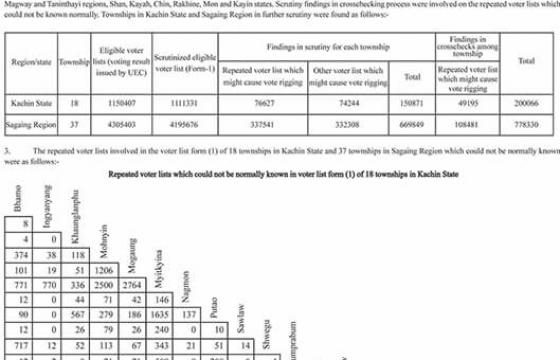Many might have thought that, with the ongoing and growing problematic in Rakhine State reaching international height that has caught United Nations attention and global concern, nobody would ever expect that the Military or Tatmadaw would quickly continue and resume with its offensive strategy move, after barely just one month of relative calm in Palaung or Ta’ang area.
The firefight lull of a month or so was broken when in September 11, the Tatmadaw clashed with the Ta’ang National Liberation Army (TNLA) Battalion-987 and Tatmadaw Division-77 troops at the upper side of Loi Ka Lay village of Kyaukme Township, according to the situation report of the TNLA.
Again on September 13, the TNLA and Tatmadaw troops clashed in 3 separate places, in Namtu, Namhsan and Kyaukme Townships.
In a battle in Namhsan Township at the place between Hu Kin and Man Mai Main villages, the Tatmadaw was said to suffer 3 dead, although there is no confirmation from the government or Tatmadaw side.
As recently as September 18, armed clashes have been occurring in Kutkai Township, according to the TNLA situation report.
Maj Mai Aik Kyaw recently told the media that the Tatmadaw has reinforced its troops in areas where the TNLA also maintains a presence. He said the Tatmadaw has increased its 88th, 77th and 33rd Light Infantry Divisions, as well as two military operations commands, resulting in about 6,000 Tatmadaw troops currently active in Kyaukme, Mogok, Hsipaw, Namhsan, Namtu, Kutkai, Hsenwi, Muse, and Namkham Townships.
During the past few months with the exceptional break of about a month in August and early September, sporadic armed engagement has been the order of the day, not only with the Tatmadaw but also with the Restoration Council of Shan State/Shan State Army (RCSS/SSA).
The conflict between the two started in the aftermath of the Nationwide Ceasefire Agreement (NCA) signing in October 2015, of which RCSS is also a signatory. Shortly after the RCSS reinforced its troops in northern Shan State, which the TNLA claimed to be within its area of operation, the military confrontation began between the two until today. The TNLA accused the RCSS of infringement into its area, while the RCSS said that it had been only protecting its Shan or Tai population, which it accused the TNLA of riding roughshod, and reinforcing its troops in its original stamping ground.
Thus, as a result the three groups, the Tatmadaw, the TNLA and RCSS/SSA are regularly engaged in armed clashes in this part of the northern Shan State, where troops operating in the area tend to step on each other toes, intentionally or unintentionally.
However, the regular meeting have been taking place, due to the possible problematic friction of geographical and operational area overlapping, between the RCSS and the United Wa State Army (UWSA), said to be also the arms supporter of the TNLA and also a member of Pangkham political alliance, the Federal Peace Negotiation and Consultative Committee (FPNCC) made up of seven ethnic armies. Apart from that the recent last few weeks meeting between the two was said to include on how the armed conflict between the RCSS and the TNLA should be resolved.
FPNCC is formed this year in April with the UWSA, the Kachin Independence Army (KIA), the Shan State Progressive Party (SSPP), the TNLA, the Myanmar National Democratic Alliance Army (MNDAA), the Arakan Army (AA) and the National Democratic Alliance Army (NDAA).
General Yawd Serk told Democratic Voice of Burma on September 15 that the inter-ethnic conflict persists and that the leaders of the RCSS and the TNLA were willing to meet somewhere in the near future, to de-escalate tensions in northern Shan State, where both claim territory, although location and date has not yet been agreed upon.
“We planned a lot of times to meet with them but it didn’t actually happen. Now, we are still arranging to meet with them,” he said
While the thawing of difficult conflict situation between the RCSS and the TNLA might now be in sight, for whatever reason they might have in store, the possibility of TNLA and Tatmadaw coming to terms to sit down and talk is still a long way off.
On August 21, Mon News Agency reported that fighting will not end until the Tatmadaw changes its attitude, according to an official from the TNLA during the FPNCC summit, from August 18 to20, in northern Shan State, at Pangkham, the UWSA headquarters
“If there is no dialogue and the Tatmadaw does not change its attitude, fighting will not end no matter what kind of [ceasefire] agreement has been signed. The situation is very bad. It’s very difficult to stop the civil war,” Brigadier General Tar Bone Kyaw, general secretary of the TNLA told the media.
The seven-member FPNCC gathered to review its political dialogue policy and unanimously agreed that the groups will only meet with government negotiators collectively.
“The problem is that the Myanmar government wants to meet the Wa or [UWSA] and the Mongla or the [NDAA] separately. As you all know, the Tatmadaw has officially said we [the TNLA, the AA and MNDAA] can only meet with them and participate in the peace process after we surrender our arms, so we are in a very difficult position,” he said.
And as such, the Tatmadaw seems to be bent on military success or negotiated surrender of the TNLA. Its undertaking of area clearance, domination of the TNLA operational area and the ongoing heightened offensives could be only seen as an indication to further the said military solution. Besides, it has not budged an inch from its commitment of meeting the FPNCC separately and not as a group as the alliance has agreed to go about with the peace negotiation process with the government and the Tatmadaw.
As it is, the fate of the TNLA is tied to the FPNCC and the changing of Tatmadaw’s attitude to be more lenient or accommodating. Otherwise, the status quo situation of on and off military confrontation will continue between the TNLA and the Tatmadaw, without real movement of progress to negotiate with the FPNCC, which in turn would only mean the stagnation of the peace negotiation process as a whole for the country.






